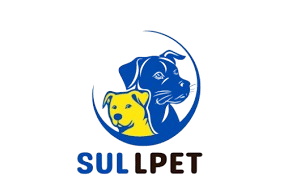Is your dog jumping on guests, chewing shoes, or ignoring commands? Don’t worry—you’re not alone. Every dog owner faces behavioral hiccups now and then. But here’s the good news: you don’t need to be a professional trainer to raise a well-behaved dog. All it takes is patience, consistency, and a whole lot of “pawsitive” reinforcement.
In this guide, we’ll break down simple, science-backed strategies that will help you encourage good behavior in dogs using the power of positive reinforcement. No yelling, no punishment—just trust, treats, and tons of tail wags.
What is Positive Reinforcement in Dog Training?
Positive reinforcement is a training technique that rewards your dog when they do something right. This increases the chance they’ll repeat the good behavior in the future.
Instead of focusing on what your dog did wrong, positive reinforcement celebrates what they did right. For example:
-
When your dog sits on command ➝ Give a treat
-
When they stay calm around strangers ➝ Give praise
-
When they walk nicely on the leash ➝ Reward with a toy
Why it works: Dogs are naturally motivated by rewards—whether it’s food, play, or your attention. When good behavior leads to something they love, they learn faster and feel more secure.
Keywords: positive dog training, reward-based dog training, how to train your dog with treats
The Golden Rules of Pawsitive Reinforcement
1. Reward Immediately
Timing is everything. Dogs live in the moment, so be sure to reward them right after the behavior you want to encourage.
✅ Example: If your dog sits, give the treat within 2 seconds so they link the action with the reward.
2. Be Consistent
Dogs thrive on patterns. Use the same command words and reward system every time. If one day you praise for sitting and the next day ignore it, your dog will get confused.
✅ Tip: Have everyone in the house use the same words like “sit,” “stay,” “down,” or “leave it.”
3. Use High-Value Treats
Not all rewards are created equal. Use special treats (like small bits of cheese or freeze-dried liver) for tougher tasks or when training in distracting environments.
✅ Tip: Keep training treats small and soft, so your dog doesn’t get full or distracted chewing.
4. Praise Matters Too
Food isn’t the only motivator. Many dogs respond just as well to verbal praise, petting, or a short play session with a toy. Find what lights your dog up!
✅ Try this: “Yes! Good girl!” with a happy tone and ear scratch after a job well done.
5. Ignore Unwanted Behavior
When safe to do so, ignore behaviors you don’t want. For example, if your dog jumps to get attention, turn your back. The idea is: don’t reward bad behavior with attention—even negative attention.
✅ Bonus: When they sit or calm down, reward that behavior instead.
Simple Positive Reinforcement Strategies to Try at Home
Here are some easy ways to incorporate positive reinforcement into your daily routine and training sessions:
1. Teach Basic Commands with Treats
Start with simple commands like sit, stay, come, and lie down. Use a treat to lure them into the desired position, say the command, then reward when they get it right.
💡 Keep sessions short (5–10 minutes) and end on a positive note.
Keywords: basic dog commands, obedience training, dog training for beginners
2. Leash Training the Friendly Way
If your dog pulls on the leash, stop walking immediately. When they come back or the leash slackens, say “good boy!” and continue walking. This teaches them that pulling gets them nowhere, but walking calmly gets rewards.
Reward loose-leash walking with treats, praise, or even the chance to sniff around.
Keywords: leash training tips, walking dog without pulling
3. Reward Calm Behavior Indoors
Don’t just reward tricks—reward manners. If your dog lays down quietly while you work or doesn’t bark when the doorbell rings, toss a treat or offer praise.
Calm behavior is golden. Reinforce it and you’ll see more of it.
4. Redirect, Then Reward
If your dog starts chewing furniture or barking at the window, calmly redirect them to a toy or chew, and praise them when they engage with it.
🔄 Replace unwanted behavior with a better alternative—and reward that.
5. Use Toys and Games as Rewards
Positive reinforcement isn’t just about treats. Use fetch, tug-of-war, or a game of hide-and-seek as a reward after a successful training session.
Mental stimulation + physical play = a happy, well-behaved dog
Keywords: dog play training, positive dog games, rewarding dog without food
Pro Tips for Smarter Training
-
Keep sessions upbeat: End training on a win, even if it’s just a simple “sit.”
-
Don’t bribe—reward: Show the treat after the behavior, not before.
-
Gradually reduce treats: Once your dog masters a behavior, switch to intermittent rewards or replace treats with praise.
-
Practice in different environments: Dogs need to generalize commands, so train in your yard, on walks, or around distractions.
💬 Consistency, patience, and love are the real secret weapons.
Positive Reinforcement and Behavior Problems
Many behavior issues—like jumping, barking, or even aggression—can improve with positive reinforcement techniques.
Instead of punishing bad behavior, teach a new behavior that’s incompatible with the unwanted one.
Examples:
-
Jumping on guests ➝ Train to “sit” for attention
-
Barking at the door ➝ Train to go to a mat or bed
-
Begging ➝ Train to wait in a spot during meals
If you’re struggling with more serious issues like aggression or anxiety, consult a certified dog trainer or behaviorist who specializes in force-free methods.
Keywords: dog behavior problems, stop barking, training reactive dogs
FAQs About Positive Reinforcement Training
Q: Can you spoil a dog with too many treats?
A: It’s all about balance. Use tiny treats during training and monitor your dog’s daily calories. You can even use their regular kibble as rewards.
Q: When should I start training my puppy?
A: As early as 8 weeks old! Puppies are fast learners. Use positive reinforcement to teach bite inhibition, potty training, and basic commands right from the start.
Q: What if my dog only listens when I have a treat?
A: Gradually fade out treats by mixing in praise and random rewards. Once the behavior is consistent, only reward occasionally to keep them guessing.
Q: Does positive reinforcement work for older dogs?
A: Absolutely! Dogs of all ages can learn using reward-based training. In fact, many older dogs thrive with the mental stimulation.
Q: Can I still say “no” to my dog?
A: You can, but use it as a cue, not a punishment. Always redirect to a positive behavior and reward that instead.
Final Thoughts: Train with Kindness, Lead with Love
Positive reinforcement isn’t just a training method—it’s a way to build a deeper bond with your dog. It teaches trust, boosts confidence, and turns training into something both you and your furry friend actually enjoy.
So grab those treats, get that happy voice ready, and start celebrating the behaviors you want to see more of. Because when you train with kindness, the results are always pawsitive.








